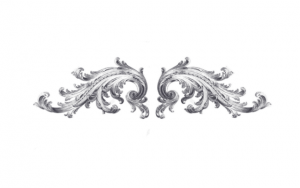Roman culture had a profound respect for tradition. These traditions, fueled by the arts and worldly knowledge, stemmed from Greek culture. The Greeks were the forebears of Roman culture; Thebes, the first of all cities, founded by King Ogygus of Greece, was 2,100 years at the time of Varro’s De Re Rustica. And still, “country life [was] much more ancient – I mean the time when people lived on the land and had no cities.”1 Greece, in all its influence, lacks perhaps a seriousness or weighted importance compared with the struggle endured by the nationless of the ancient world. Varro continues: “…And no marvel, since it was divine nature which gave us the country, and the man’s skill that built the cities.”2 Comparing the tilling of fields to ancient Greek artworks, the former is both a more ancient enterprise, as well as a more “noble” one. As such, those that lived off the land, by means of both agriculture and grazing, were considered to have led “a pious and useful life” in the Republic.3  Elite villa life in the late-Republic is an example of “ideal reinterpretation,” following closely to Pliny’s quote, “[that nature creates] playthings for herself and marvels for us.”4 Many villas on the Italian coast maintained productive facilities of agriculture and grazing. And still, the honest work of impoverished Roman ancestors was skewed to fit to elite life. Varro recounts a story in which he and a senator named Quintus Axius visited a villa with an aviary. Upon asking the augur, Appius Claudius, what a villa is, Appius responds that a villa could be productive. He states, “for there are two kinds of pasturing: one in the fields, which includes cattle-raising, and the other around the farmstead, which includes chickens, pigeons, bees, and the like, which usually feed in the steading.” 5 Such villas profited greatly from raising a variety of bird (“geese, chickens, pigeons, cranes, and peafowl…”)6, profits that would be earned through “villa-feeding,” or supplying food to frequent elite banquets.7 As such, a villa that was “well-stocked” with animals “exemplif[ied immense] power” and influence with those of attendance at these gatherings.8
Elite villa life in the late-Republic is an example of “ideal reinterpretation,” following closely to Pliny’s quote, “[that nature creates] playthings for herself and marvels for us.”4 Many villas on the Italian coast maintained productive facilities of agriculture and grazing. And still, the honest work of impoverished Roman ancestors was skewed to fit to elite life. Varro recounts a story in which he and a senator named Quintus Axius visited a villa with an aviary. Upon asking the augur, Appius Claudius, what a villa is, Appius responds that a villa could be productive. He states, “for there are two kinds of pasturing: one in the fields, which includes cattle-raising, and the other around the farmstead, which includes chickens, pigeons, bees, and the like, which usually feed in the steading.” 5 Such villas profited greatly from raising a variety of bird (“geese, chickens, pigeons, cranes, and peafowl…”)6, profits that would be earned through “villa-feeding,” or supplying food to frequent elite banquets.7 As such, a villa that was “well-stocked” with animals “exemplif[ied immense] power” and influence with those of attendance at these gatherings.8
- Varro, Marcus Terentius. “On Agriculture: Book III.” De Re Rustica. Loeb Classical Library, 1934: 423. ↵
- Varro, Marcus Terentius. “On Agriculture: Book III.” De Re Rustica. Loeb Classical Library, 1934: 425. ↵
- Varro, Marcus Terentius. “On Agriculture: Book III.” De Re Rustica. Loeb Classical Library, 1934: 425. ↵
- Beagon, Mary. “Wondrous Animals in Classical Antiquity.” The Oxford Handbook of Animals in Classical Thought and Life. Oxford, UK: Oxford University Press, 2015: 1. ↵
- Varro, Marcus Terentius. “On Agriculture: Book III.” De Re Rustica. Loeb Classical Library, 1934: 435. ↵
- Varro, Marcus Terentius. “On Agriculture: Book III.” De Re Rustica. Loeb Classical Library, 1934: 437. ↵
- Varro, Marcus Terentius. “On Agriculture: Book III.” De Re Rustica. Loeb Classical Library, 1934: 439. ↵
- Green, C.M.C. “Free as a Bird: Varro de re Rustica 3.” The American Journal of Philology, 118, no. 3 (Autumn 1997): 440. ↵